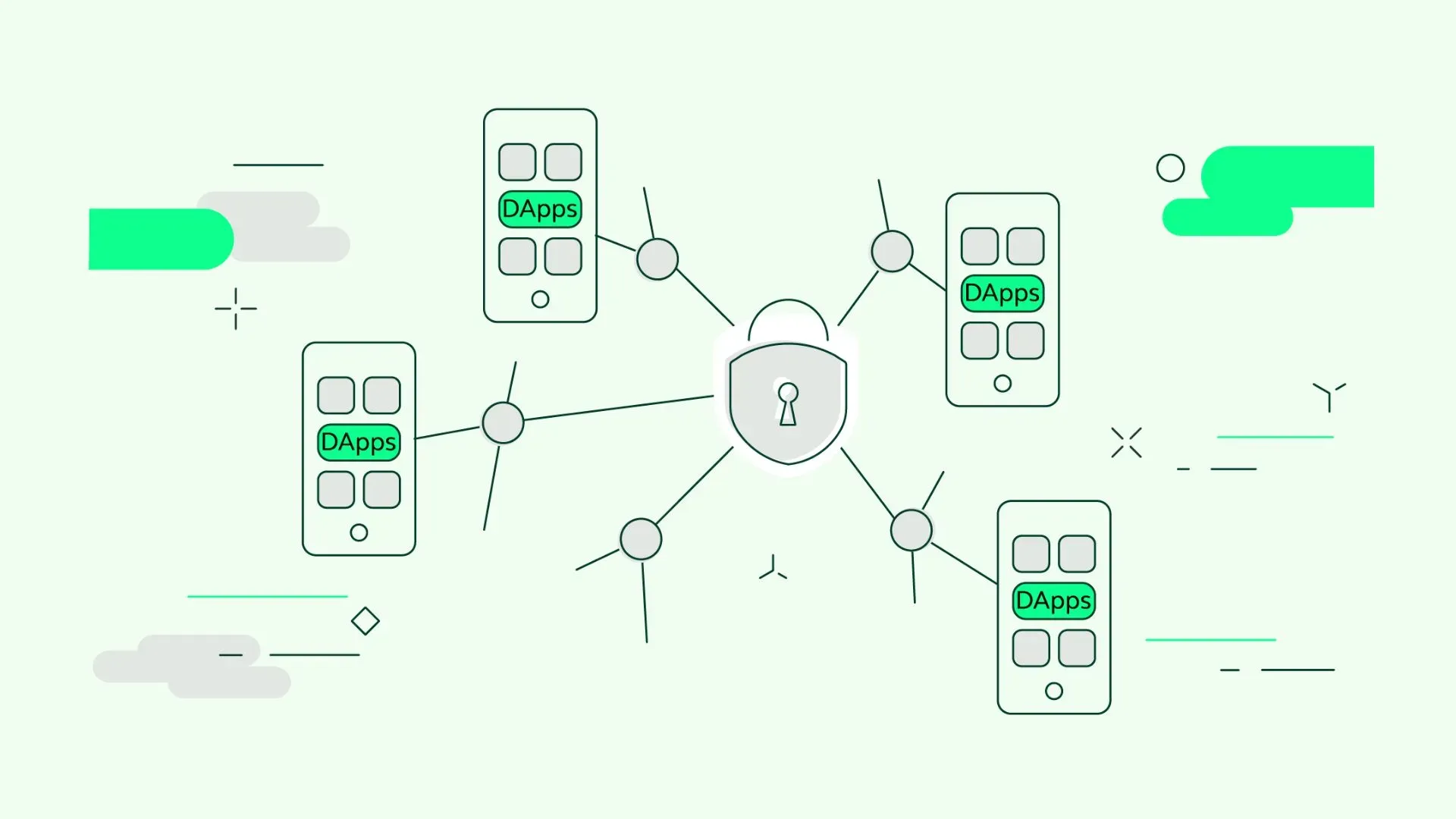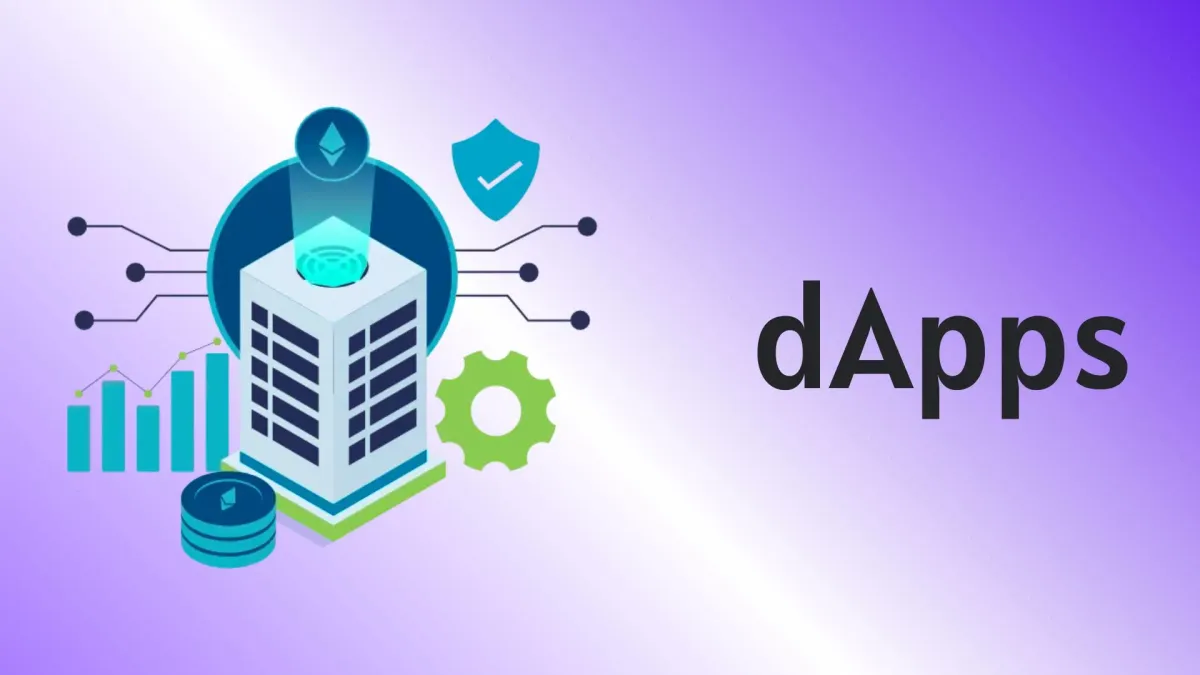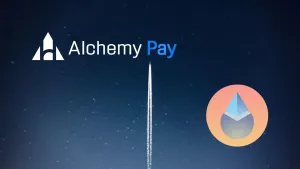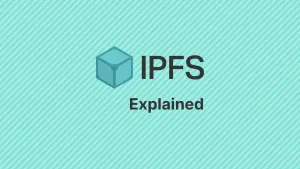Decentralized Applications (dApps), are the next step towards the revolution of the internet. dApps are digital applications that operate on the foundations of blockchain technology. They are not controlled by a single authority like traditional Web applications (Android or iPhone Apps). These digital applications can be built on blockchain platforms like Ethereum.
- Decoding Web3 (Explained): Evolution Of Web & Core Features
- How Is Web3 (Decentralized Internet) Different From Web2?
dApps have been developed to enable a secure network and community governance. They can be used as web plugins to help facilitate and track advertisements, as well as to monitor user experience. DApps can complete transactions on the blockchain using smart contracts when certain predetermined conditions are met.
What Are dApps?
Decentralized Apps, consist of back-end code that runs on a decentralized, peer-to-peer platform. Unlike traditional apps, which are either downloaded or accessed through a website, dApps operate on the blockchain network. This structure gives users more control over how their data is used and stored, without reliance on a central authority.

dApps are open-source applications that employ smart contracts to conduct transactions on the blockchain. They come in various forms, including decentralized finance (DeFi), non-fungible tokens (NFTs), and social media platforms.
How Do dApps Differ From Web Applications?
1. Decentralization
The change from centralized web applications to dApps is possible because of the decentralization that was introduced in Web3. The emergence of dApps has made applications more trustworthy as users get more control over their data and assets.
2. Security
dApps are tamper-proof and cannot be hacked as they are built on the principles of blockchain technology. This makes it more secure than traditional applications which are prone to hacking.
3. Development Cost
Traditional apps have to take into account the platform fee, development fee, maintenance, and cloud server fee. dApps on the other hand have a one-time development fee that’s taken care of during the dApp development according to the complexity of the application.
4. Usage Fee
On the other hand, the usage of web applications is free whereas dApps have a minimal transactional fee users have to pay. The transactional cost varies according to the platform that is used.
5. Speed
dApps are known for being very slow as they can process about 15 transactions per second. This creates a restraint on how many users can use the platform simultaneously. Traditional apps outperform dApps in terms of speed.
How To Use DApp
Getting started with dApps can be a daunting task as there are various platforms and wallets to choose from. You can set up and use a dApp by following the below steps:
1. Wallet
A digital wallet holds the user's digital currency that will be required to interact or complete transactions on the dApp. There are various wallet options like MetaMask, Coinbase wallet, and Trust Wallet to choose from based on the user's choice. The wallet will be associated with a private key that should never be shared.
2. Cryptocurrency
Once the user has chosen an appropriate wallet, the wallet has to be recharged with digital assets or cryptocurrency. Users can choose from tokens such as Ethereum, Bitcoin, and Cardano depending on the dApp that choose.
3. Choosing AAppropriate DApp
There are various types of dApps depending on the platform, such as DeFi, NFTs, social media, and gaming. Users can choose the dApp based on reviews, tutorials, and customer forums to understand the risks and functions of the dApp.
Once an appropriate dApp is chosen, connect the wallet and provide any necessary permissions to link the wallet to the application. Few of the dApps are equipped with user-friendly interfaces and FAQs to assist the user in case of any challenges.
Future Of dApps
1. Decentralized Exchange (DEX)
The use of DEX or decentralized exchange will rise as it will create an interoperable system between two blockchains. This will facilitate seamless asset transfer and enhanced flexibility between the blockchains.
dApps can subsequently be built on DEX for easier borrowing, lending, and swapping tokens. DEXs like Uniswap and PancakeSwipe have become large players in DeFi and Binance Smart Chain.
2. NFT Based Blockchain Games
NFT-based games have the potential to gain popularity in the future. NFTs, being unique and indivisible, are ideally suited for tokenization. This characteristic makes them well-suited for use as digital assets in online games, like Axie Infinity.
Such games enable players to earn through gameplay by establishing new economic models that reward time investment and skill, potentially leading to profit over time.
3. Metaverse
The metaverse and dApps both operate on blockchain technology, making them an ideal combination. dApps in the metaverse can facilitate land ownership within the virtual world, which can then serve as venues for games and events.
Additionally, the metaverse offers a virtual marketplace for items such as avatar clothing and accessories, mirroring real-world transactions. It also fosters social interactions within the virtual environment, among many other innovative experiences.
The future of dApps and its applications is brimming with opportunities that will flourish with technological advancement and accessibility.
The Challenges Of dApps
Just like every other emerging technology, dApps also has a few drawbacks. Along with its potential to revolutionize the way we see and work with web applications, it faces challenges that need to be addressed such as:
1. User Experience
Interacting with blockchain and working with blockchain technology will not be easy for non-technical users as it requires technical knowledge. Accessibility can be limited as dApps most often require a very specific cryptocurrency wallet that may not be readily available. A few dApps still lack user-friendly interfaces that can be challenging to navigate for users who are unfamiliar with Web3.
2. Scalability
Few blockchain networks have high gas fees and slow transaction times which especially occur when there is high user traffic. This can affect the user experience and hinder the use of dApp. Different blockchain networks often lack interoperability which limits collaboration and value exchange.
3. Ethical Concerns
The financial constraints posed by dApps can create divides in the digital world. As a result, users would be excluded from participating in this emerging technology. Some blockchain networks consume high energy which could impact sustainability and the environment.
4. Law And Regulation
dApps could face challenges in complying with the current regulations that could lead to legal risks and operational complications. It is crucial to establish clear regulations and measures to prevent unfair practices and scams within the dApp.
These challenges faced by dApps are not permanent and can be fixed by developing regulated, sustainable and user-centric solutions.
Conclusion
dApps will provide users with more potential and benefits than the current web applications. The future of dApps depends on its scalability, security, and user experience. With technological advancement, dApps will provide a better experience and will disrupt the current traditional web applications.






